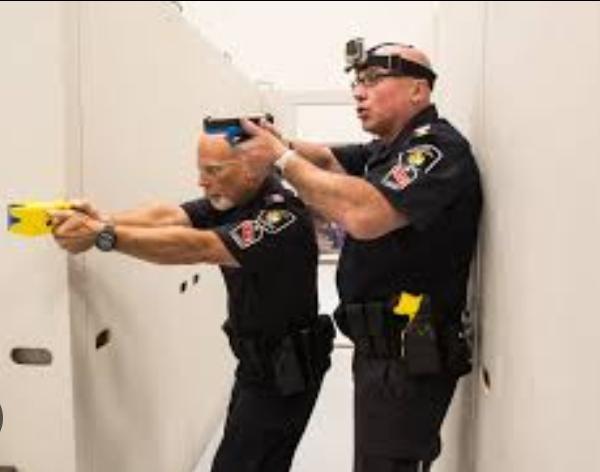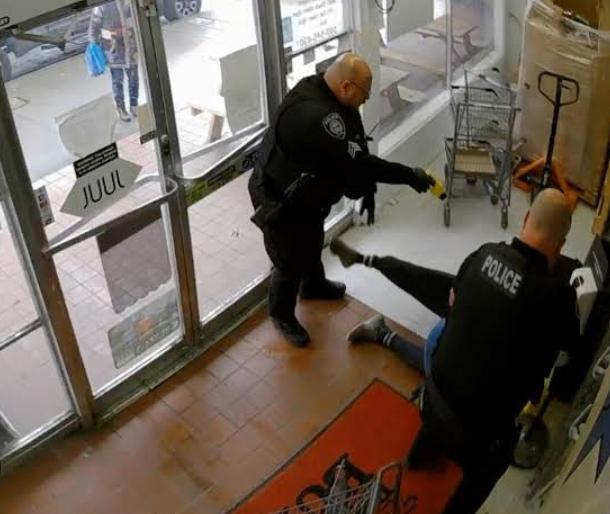Related Posts
When making an arrest, police officers can use a fair amount of force. However, the police officer should not use more force than is necessary to conduct the arrest. The arrested person has the right to sue, especially if an unjust tasing caused the injuries.
This is because a taser is an electrical device that temporarily renders a person unconscious due to its electrical current. This is why only cops with specialized training may use it. Also, they can only be used in circumstances that require them to deal with violent or dangerous people.
Tasers are extremely painful and incapacitating, and they can induce heart attacks or other major physical effects in certain people. The question of excessive force frequently comes up when a police officer uses it. There are several stories concerning how law enforcement officers use tasers on people. Some even make use of people who don’t show any form of threat to them.
The one that caught our attention was a 65-year-old former police officer. This was particularly concerning because he is also a veteran, as he served in the U.S. Army. He was tased at his own home when it appeared he didn’t pose any form of threat to the police officer. Now, some consider this to be very unfair, considering the danger that Tasers can cause.
What Crime Did the Man Commit to Warrant Being Tased?
According to the news report, the victim is Barton Wade. He is a former police officer and veteran of the United States Army. Wade claims that a Police officer from the City of South Fulton tased him inside his Fairburn home. He claims he did this using excessive force only because he was trying to put on his pants.

This might sound funny and unreal. This was more so because there is no way an officer of the law would unjustly tase someone for attempting to put on pants. Wade, however, showed a video he had recorded showing every detail of what happened.
What Wade Had to Say About the Tasing

Wade, when asked during an interview with a news channel, says that unjustly tasing a citizen who is speaking makes no sense to him. He asked the officer if he was going to tase him while he was putting on his pants. Wade said the officer replied, “Yes, I’m going to tase you.”
Wade said his wife contacted law enforcement to implement a provisional protection order. The court had not approved it. Wade explained that he had just finished showering and was only wearing boxer shorts when the police showed up.
The officer told him that he was being detained, and he asked, “What crime, sir?” the officer replied, “No crime.” So he told the officer that he wanted to put his pants on. As soon as he turned to get his pants, the officer fired his taser at him and he fell on the floor.
This is so unfair to Wade, as he said the experience was very painful. This is especially because he is 65 years old and diabetic. He also said that if you get unjust tasing with no clothes on or if you have rings or any jewelry on, it burns your skin.
What Is the Policy on the Use of Tasers by Police Officers?
Every police department in the states has its policy on the use of tasers which are similar to each other. For example, in some police departments, a policy warrants officers to give a verbal and visual warning before using a taser.
A verbal warning should be given unless doing so would jeopardize officers’ safety or if it is not practical because of the circumstances surrounding the arrest. One of the reasons behind the warning is to give the person a fair chance to choose to cooperate willingly. Another reason is to warn people and other law enforcement officials that a taser might be used so they know.
Sometimes, people ignore an officer’s verbal warning and refuse to comply with an officer’s lawful orders willingly. If it appears both reasonable and practical under the circumstances, the officer may display the electrical arc. This is provided there is no cartridge loaded into the taser or the laser. All of this is in a further attempt to gain compliance before unjust tasing.
Also, officers should never point the taser directly into someone’s eyes deliberately since this could cause lasting visual impairment. The taser-deploying officer shall record the grounds for not providing a verbal or other warning and the fact that he gave one.
More About the Policy on the Use of Tasers by Police Officers
According to the law, an officer may only use a taser on someone who is being violent or is physically resisting. And also if the person has shown through words or deeds that he or she intends to use violence or physically resist and if there is a reasonable suspicion that the person could endanger others or themselves as well as officers. A person merely running away from pursuing police officers will not be a valid reason for using a taser to put someone in custody unless there is a reasonable suspicion that the person has done or threatened to commit a crucial crime.
Pregnant women, old people, or juveniles should not be tasered. The same goes for those who are handcuffed or in some other type of restraint. Similarly, they are not to taser people whose actions or positions could cause unintentional harm (such as falls from height or moving vehicles). They can, however, be tasered if they pose a potential risk.
As you can see, Wade was not treated fairly by the police. Furthermore, Wade says that he was surprised to discover that there was no mention of the tasing incident in the police report he received. He also said he was informed that the obstruction case against him had been withdrawn. So he recently got an attorney, who notified the City of South Fulton of his intention to file a lawsuit and his claim for 1.2 million dollars in damages. He also demands that the policeman who tased him be held responsible.
What Happened to the Police Officer Who Tased Wade?
Well, the news channel that interviewed Wade about the tasing has reached out to the City of South Fulton police for comment on the incident and the police department’s policy on the use of tasers. They say they received the request and are looking into it.
